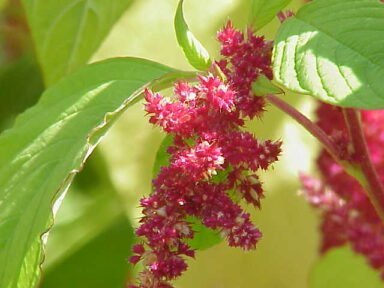In a world where self-sufficiency is becoming increasingly vital, having a reliable source of food is essential. Imagine stepping outside and harvesting fresh, nutritious produce straight from your own garden, no matter the circumstances.

Survival seeds are not just for avid gardeners; they are a crucial investment for anyone looking to ensure their family’s food security. Whether you’re preparing for a natural disaster, economic uncertainty, or simply seeking to reduce your dependency on grocery stores, the right survival seeds can make all the difference.
In this guide, we’ll explore the top 10 survival seeds that every preparedness-minded individual should consider, providing you with the knowledge and confidence to grow your own sustainable food supply.
Role of survival seeds in sustainable food production
Finding the best survival seeds is the cornerstone for sustainable food production. These specially curated seeds have been carefully selected for their ability to thrive under diverse environmental conditions and produce high-yielding crops. Unlike conventional seeds that are often genetically modified or treated with chemicals, survival seeds focus on preserving biodiversity and maintaining natural resilience.
By planting the best survival seeds in your garden or small-scale farm, you ensure a reliable source of fresh produce and contribute to preserving heirloom varieties that might otherwise be lost. Survival seeds enable individuals and communities to become more self-reliant regarding food production.
Finding the Best Survival Seeds
When it comes to the best survival seeds, it’s essential to understand their definition and characteristics. In simple terms, survival seeds are a collection of seeds that are specifically chosen and stored for long-term food security in uncertain times. These seeds are specially treated to maintain their viability for extended periods, ensuring they can be successfully planted when needed.
Their ability to withstand harsh conditions, including droughts or other environmental challenges, sets survival seeds apart. They are carefully selected based on their resilience, adaptability, and nutritional value.
Types of Survival Seeds (Heirloom, Open-Pollinated, Hybrid)
The best survival seeds come in various types, each with advantages and considerations. Heirloom seeds are non-hybrid varieties passed down through generations due to their desirable traits. These seeds offer genetic diversity and the ability to save and replant the harvested seeds year after year while maintaining specific characteristics.
Open-pollinated seeds refer to those that can be pollinated by insects or wind without human intervention. This natural process ensures genetic diversity within a crop.
On the other hand, hybrid seeds result from crossbreeding two different varieties to create plants with specific desired traits like disease resistance or improved yield potential. However, hybrid seeds cannot be saved for replanting as they do not produce offspring with consistent characteristics.
The choice between these survival seeds depends on personal preference and goals. Heirloom and open-pollinated varieties provide long-term self-sufficiency through seed-saving practices, while hybrids offer specific advantages in terms of productivity or resistance.
Factors to Consider When Finding the Best Survival Seeds
Selecting the best survival seeds is crucial for successful gardening in challenging times. Several key factors should be considered:
1. Adaptability: Look for seeds adaptable to your local climate, soil conditions, and growing season. Opting for varieties that can thrive in different environments will increase your chances of success.
2. Nutritional Value: Consider the nutritional needs of you and your family. Look for seeds that provide a good balance of essential nutrients like vitamins, minerals, proteins, and healthy fats to ensure a well-rounded diet.
3. Storage Life: Pay attention to the storage life of the seeds you choose. Some seeds have longer shelf lives than others, which is important for maintaining a reliable food source for an extended period.
4. Seed Viability: Check the viability of the seeds before purchasing or storing them. Ensure they have been properly treated and stored for a high germination rate when planted.
5. Personal Preferences: Consider personal preferences when selecting survival seeds. Consider the types of vegetables or fruits you enjoy eating and prioritize those in your selection process.
By considering these factors while choosing survival seeds, you can be better prepared to grow a diverse range of nutritious crops that meet your specific needs during uncertain times.
Essential Nutritional Value of Survival Seeds


Key nutrients provided by survival seeds
The best survival seeds are not just a means to grow plants; they are tiny powerhouses of essential nutrients that can sustain us in times of need. Packed with vitamins, minerals, proteins, and healthy fats, these seeds offer a well-rounded nutritional profile necessary for our bodies to thrive. They are the building blocks of a balanced diet and can provide sustenance when fresh produce is scarce or inaccessible.
Protein-rich seeds (quinoa, chia, hemp)
Survival seeds like quinoa, chia, and hemp take center stage regarding protein content. Quinoa is remarkable as it contains all nine essential amino acids our bodies require.
Chia seeds have impressive protein content and are rich in fiber and omega-3 fatty acids. Hemp seeds are another excellent source of complete plant-based protein while providing an abundance of healthy fats like omega-6 and omega-9.
Vitamin-packed seeds (sunflower, pumpkin)
Sunflower and pumpkin seeds stand out for their vitamin-packed qualities. Sunflower seeds contain an array of B vitamins such as thiamine (B1), riboflavin (B2), niacin (B3), and folate (B9), all crucial for supporting overall health and proper cell function. Pumpkin seeds shine as a source of vitamin E – a potent antioxidant that helps protect cells against oxidative damage while also delivering important minerals such as zinc and magnesium. These are some of the best survival seeds you can own.
Omega-3 fatty acid sources (flaxseed, sesame)
Look no further than flaxseeds and sesame seeds for those seeking omega-3 fatty acids from plant-based sources. Flaxseeds contain alpha-linolenic acid (ALA), an omega-3 fatty acid that supports heart health and reduces inflammation. Sesame seeds, known for their nutty flavor, also provide many omega-3 fatty acids while offering additional benefits like calcium and iron.
Fiber-rich options (amaranth, Buckwheat)
Regarding fiber-rich survival seeds, amaranth and Buckwheat take the lead.
Amaranth seeds are packed with dietary fiber and offer an impressive range of vitamins and minerals.
This gluten-free grain can help regulate digestion and promote a healthy gut.

Despite its misleading name, Buckwheat is a seed known for being abundant in soluble and insoluble fiber. It aids digestion, promotes satiety, and maintains stable blood sugar levels.
Incorporating these nutrient-dense best survival seeds into our diet ensures we access vital proteins, vitamins, healthy fats, and fibers even during challenging times.
Top 5 Must-Have Survival Seeds for Every Garden
Tomatoes: Versatile and Packed with Vitamins and Antioxidants
Regarding the best survival seeds, tomatoes are an absolute must-have. Not only are they incredibly versatile in the kitchen, but they are also packed with essential vitamins and antioxidants that our bodies need to thrive. Tomatoes contain high levels of vitamin C, which helps strengthen our immune system and fight off infections.
They also boast a good amount of vitamin A, potassium, and lycopene—a powerful antioxidant known for its potential cancer-fighting properties. Whether you prefer cherry tomatoes for snacking or larger varieties for sauces and salads, these vibrant fruits will not disappoint in taste or nutrition.
Beans: Excellent Source of Protein and Fiber; Easy to Grow and Store
Beans have long been hailed as an essential survival food due to their exceptional nutritional value. These humble legumes are an excellent source of protein and boast high levels of fiber that aid digestion and promote satiety. Moreover, beans are incredibly easy to grow in almost any climate—making them perfect for novice and experienced growers alike.
With their ability to fix nitrogen in the soil, beans also contribute towards improving soil fertility naturally. Once harvested, beans can be easily stored for prolonged periods without losing their nutritional potency—a crucial aspect of survival gardening.
Kale: Nutrient-dense leafy Green with High Adaptability to Various Climates
If there is one leafy green that deserves a spot in your survival seed collection, it’s kale. This nutrient-dense powerhouse is packed with vitamins A, C, K, calcium, iron, and antioxidants—vital for maintaining optimal health in challenging times.
One remarkable aspect of kale is its adaptability to various climates, making it a reliable source of greens regardless of where you live. Whether you choose the curly or dinosaur (Lacinato) variety, kale can be harvested continuously by picking outer leaves while allowing inner ones to grow—a sustainable and abundant addition to any survival garden.
Carrots: Rich in Vitamins and Minerals; Provide Long-Term Storage Options
Carrots add color to your garden and provide essential vitamins and minerals necessary for survival. Packed with beta-carotene (which our body converts into vitamin A), carrots promote healthy vision, enhance immune function, and support overall well-being. These root vegetables are also an excellent source of dietary fiber and contain essential minerals like potassium and calcium.
Carrots are even more valuable in survival because they can be stored for extended periods without losing nutritional value. Properly storing carrots in a cool and dry environment or preserving them through canning or freezing techniques allows you to enjoy their benefits throughout the year.
Peppers: Adds Flavor and Essential Nutrients; Suitable for Container Gardening
Adding a little spice to your survival garden is made easy with peppers—bell peppers, chili peppers, or jalapenos. Not only do peppers add flavor to countless dishes, but they also offer a wide range of essential nutrients such as vitamins A and C. Peppers are relatively easy to grow from seeds and can thrive even in small spaces due to their suitability for container gardening. Their vibrant colors make them visually appealing in any garden setting as well.
By including peppers in your best survival seeds collection, you’ll have access to an ingredient that enhances the taste of your meals and provides a healthy dose of antioxidants and heat when needed. With these five must-have survival seeds—tomatoes, beans, kale, carrots, and peppers—you’ll have a robust foundation for creating a resilient and sustainable garden that can sustain you through challenging times.
By growing these versatile crops, you’ll ensure a diverse range of nutrients on your plate and have the means to store and preserve food for the long term. Happy gardening, and may your harvests be bountiful.
Niche Survival Seeds Worth Considering
Survival Herbs
When it comes to survival, having a stash of medicinal and culinary herbs can provide essential nutrients and natural remedies for common ailments. Medicinal herbs like echinacea and chamomile are renowned for their immune-boosting properties and ability to alleviate cold and flu symptoms.
Echinacea stimulates the immune system with its vibrant purple flowers, while chamomile soothes nerves and promotes relaxation. On the culinary side, herbs such as basil and oregano add flavor to any dish.
Basil’s distinct aroma complements tomatoes perfectly, making it a must-have herb for your survival garden. Oregano, with its robust taste, is not only delicious but also possesses antimicrobial properties.
Exotic Fruits
If you want to add some excitement to your survival garden while still ensuring a sustainable source of nutrition, consider cultivating exotic fruits like dragon fruit and kiwi berries. Dragon fruit is a visually stunning plant with vibrant pink or yellow skin and white or red flesh speckled with tiny black seeds.
This hardy cactus-like plant thrives in warm climates, making it an excellent addition for those living in arid regions. Not only does dragon fruit taste deliciously sweet with refreshing hints of kiwi and pear flavors but it’s also packed with antioxidants that promote overall health.
Kiwi berries are another fantastic option for those looking for something unique in their survival garden. These small fruits resemble miniature kiwis but have smooth, edible skin without the need for peeling.
Kiwi berries are cold-hardy plants that can withstand harsh winters without sacrificing their ability to produce an abundance of these delightful fruits. They are rich in vitamin C and dietary fiber, providing nutritional value and a burst of tangy sweetness.

Frequently Asked Questions (FAQs)
What are the best survival seeds?
Survival seeds are specially selected for long-term storage and sustainable food production, especially during times of crisis or uncertainty.
Why are survival seeds different from regular seeds?
Survival seeds are chosen for their resilience, adaptability, and nutritional value. Unlike many conventional seeds that may be genetically modified or treated with chemicals, survival seeds emphasize natural resilience and biodiversity.
What are the main types of survival seeds?
The primary types are heirloom, open-pollinated, and hybrid seeds. Each has unique advantages and considerations regarding replanting, yield, and genetic consistency.
Can I save seeds from hybrid plants for replanting?
Hybrid seeds result from crossbreeding two varieties. While they offer specific benefits, their offspring won’t consistently carry those traits. Therefore, they aren’t the best choice for seed saving and replanting year after year.
Why are heirloom seeds essential in survival gardening?
Heirloom seeds have been passed down through generations and are non-hybrid. They maintain genetic consistency and allow gardeners to save and replant seeds season after season.
Are the best survival seeds organic?
Not all survival seeds are organic, but many suppliers prioritize organic, untreated seeds to preserve natural resilience and biodiversity.
How long can survival seeds be stored?
Some survival seeds can remain viable for several years with proper storage in a cool, dark, and dry environment. However, the shelf life varies depending on the seed type.
Which survival seeds offer the highest nutritional value?
Seeds like quinoa, chia, and hemp are rich in protein. Sunflower and pumpkin seeds contain vitamins, and flaxseeds provide omega-3 fatty acids. A diverse seed collection is essential to ensure a balanced nutrient intake.
How do I ensure the viability of seeds before planting?
You can conduct a germination test by placing a few seeds between wet paper towels. They are viable if they sprout within the typical germination period for that seed type.
Why should I consider growing niche survival seeds like echinacea or dragon fruit?
Niche survival seeds, including certain medicinal herbs and exotic fruits, add diversity to your garden and provide unique nutritional and health benefits. They can also bring a sense of novelty and excitement to gardening and diet.
How do the best survival seeds contribute to self-sufficiency?
Growing your food using survival seeds reduces dependence on commercial supply chains, ensuring a consistent supply even during disruptions. Plus, saving and replanting seeds allows you to continue the food production cycle indefinitely.
What factors should I consider when selecting survival seeds?
Consider adaptability to your local climate, nutritional value, storage life, seed viability, and personal dietary preferences.
Can the best survival seeds be grown in containers or urban settings?
Many of the best survival seeds are suitable for container gardening and are perfect for urban environments or spaces with limited ground soil.
How do survival seeds promote ecological balance?
Survival seeds, especially heirloom and open-pollinated varieties, contribute to preserving biodiversity. Growing them also reduces reliance on industrial, agricultural practices that may employ harmful chemicals or environmentally detrimental methods.
Where can I purchase survival seeds?
Many online retailers and local garden centers offer survival seed kits or individual seed packets tailored for long-term storage and sustainable food production.



